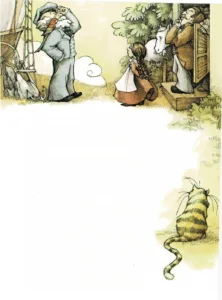Windwagon Smith
The story of Windwagon Smith is actually a \”tall tale” that was made up
by American frontier people more than one hundred years ago. Whoever
made up the story was aware that wind is a powerful source of energy
that can do a lot of work for people!
Little Charity Simson came running down the street, lickety-split, like
a jack rabbit with a coyote on its tail. \”Pa! Pa!” she hollered.
\”There’s a wagon cornin’ into town!”
Her pa, Jack Simson, was standing at the door of his store on Main
Street. He looked at her in surprise. \”Land sakes, child,” he remarked,
\”that’s nothin’ to fuss about. Ten or twelve wagons come to town every
day.”
That was true. It was 1850, and a lot of American folks were traveling
west to seek their fortunes. They traveled with all their goods and
belongings piled into covered wagons. A covered wagon was like a big,
flat box on wheels, with a cloth dome stretched over it. It was pulled
by a team of oxen.
As Mr. Simson had said, about a dozen of these wagons came into the town
of Westport, Kansas, every day. Westport stood right at the beginning of
all the trails that led west—the Santa Fe Trail to New Mexico, the
Oregon Trail to the Northwest, and so on. So, all the people heading
west had to drive their wagons through Westport.
But little Charity shook her head so hard her braids swung. \”This isn’t
like other wagons, Pa,” she said. \”There’s no oxes pullin’ it! It’s
movin’ by itself!”
\”What?” exclaimed her father. \”That’s not possible.”
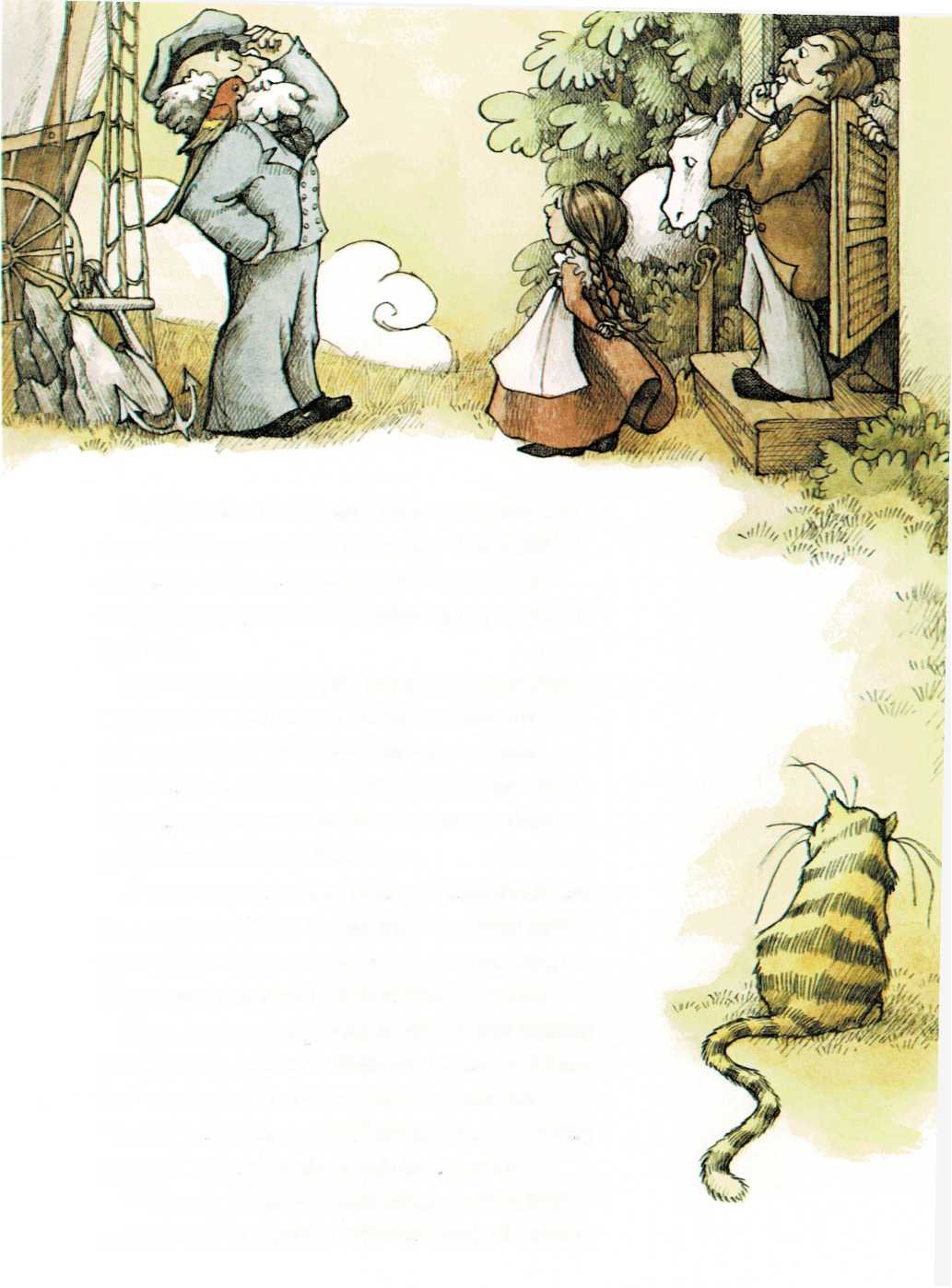
But just then he heard a big commotion of dogs barking, horses
whinnying, and peopleshouting. Down the street, followed by an excited crowd, came the
wagon that moved by itself.The wagon looked like an ordinary covered wagon, but with some new
parts added to it.A large square platform had been rigged above the cloth cover. A tall
mast stuck up from the platform. And on the mast, a big sail billowed
in the breeze.A man was standing on the platform. As the townspeople stared in
wonder, he rolled up the sail and let down an anchor on a long rope.
The wagon stopped right at Simson’s store.The man dropped a rope ladder and climbed swiftly to the ground.
\”Howdy, mates,” he said to the people who came crowding around.
\”Smith’s the name. Able-Bodied Seaman Smith, formerly of the clipper
ship Sea Sprite.”\”What in tarnation kind of wagon is that?”
exclaimed Mr. Simson. \”What makes it go?”
Smith winked at him. \”Why, matey, that’s a windwagon. The wind makes it
go. There’s tremendous power in wind! It rushes over the sea, pushing
big, heavy clipper ships along with ease.
\”Since all this prairie land is like a sea— flat, and with wind
rushing over it—I sez to myself, why not put a sail on a wagon and let
the wind push it over this dry sea?” He winked again. \”You know, it
costs money to feed oxen, to get ox-power, but the power of the wind is
free!”
There were murmurs of appreciation from the crowd. \”How fast will it
go?” someone asked.
\”How fast?” Smith chuckled. \”Why, I’ll give an ox-drawn wagon a half a
day’s start and pass it up in an hour!” He looked around at all the
people. \”But why not see for yourselves? Why don’t some of you come
aboard for a short cruise? I’ll show you what my windwagon can do.”
The people looked at one another, uncertainly.
\”Let’s go, Pa!” begged Charity Simson, pulling at her pa’s sleeve.
\”All right,” agreed Mr. Simson, not wanting to seem fearful in front of
his little girl.
\”I’ll go, too,” said Mr. Hawkins, the mayor.
Altogether, seven men and little Charity finally climbed the rope ladder
to the deck of
Smith’s windwagon. When all were aboard, Smith hoisted the anchor and
unfurled the sail. Slowly, the windwagon began to roll up the street as
the wind pushed on the sail.
When the wagon got out of town, where there were no buildings to block
some of the wind, it started to move faster. A cowboy on a pinto horse
had ridden out of town after the wagon, and now the pinto galloped as
fast as it could to try to keep up. But it dropped farther and farther
back. In a few minutes, horse and rider were only a speck.
\”Say, we’re really moving, all right,” observed Mayor Hawkins, rather
nervously.
They certainly were! The wind was pushing the sail so hard that the
cloth was stretched
into a big bulge. The golden prairie grass flashed past in a blur. The
only trouble was that the deck of the windwagon was swaying,
just like the deck of a ship at sea. The men,
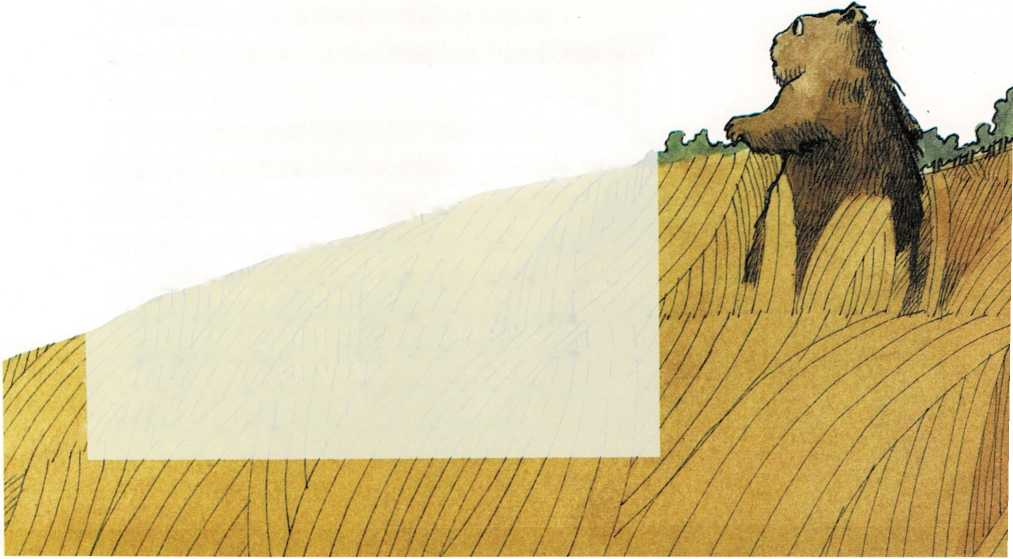
who had been excitedly talking among themselves, grew silent. Some of
them began to look rather pale.The windwagon sped on, with the deck pitching, swaying, and creaking.
Charity, who had been chattering happily with Smith, turned to see how
her father was enjoying the ride.\”Pa!” she exclaimed. \”What’s the matter?”
Smith turned to look. Several of the men were . hanging feebly over
the railing. The others lay \’ weakly on the deck. None of them were
pale / any longer. They had all turned green.
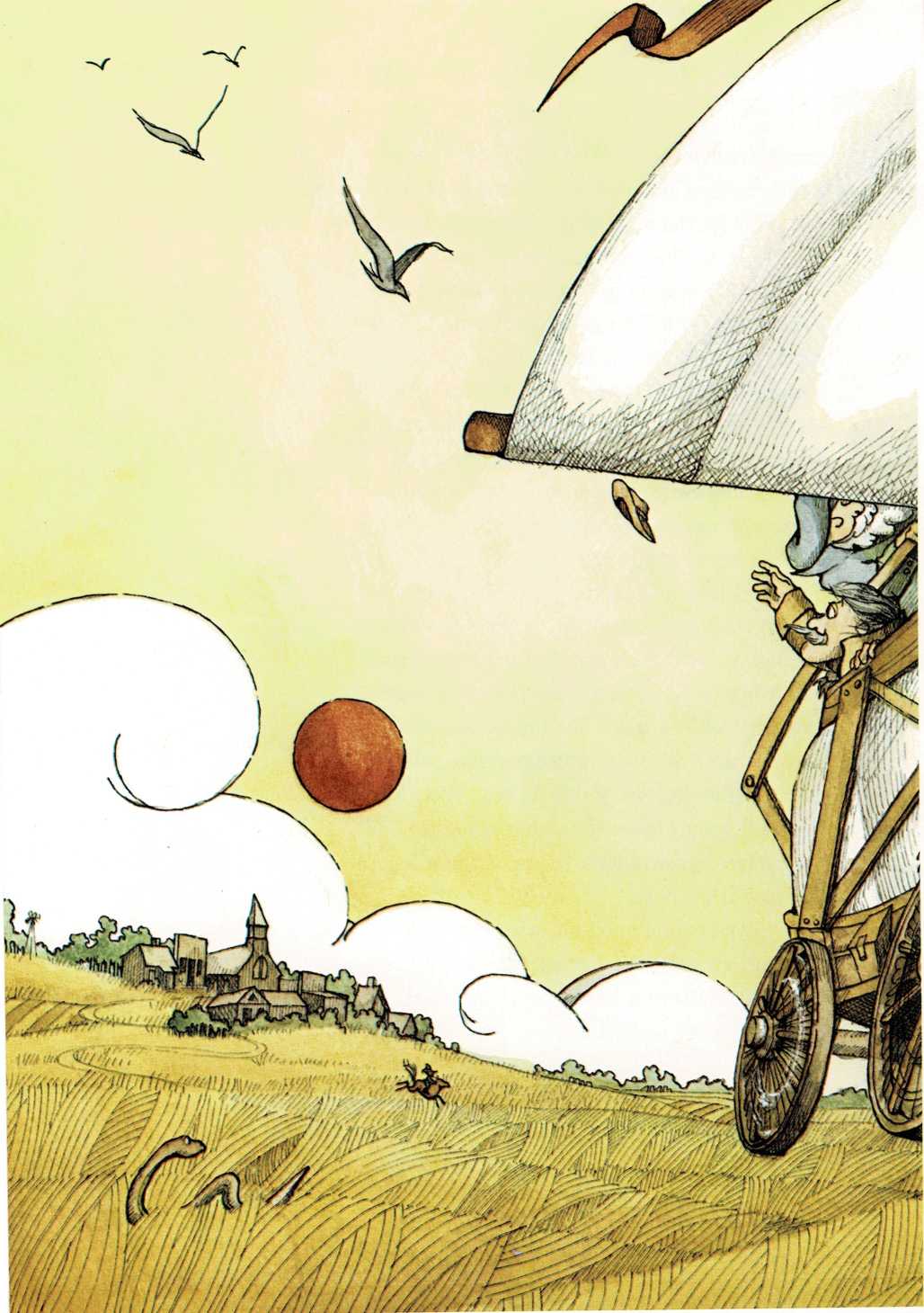
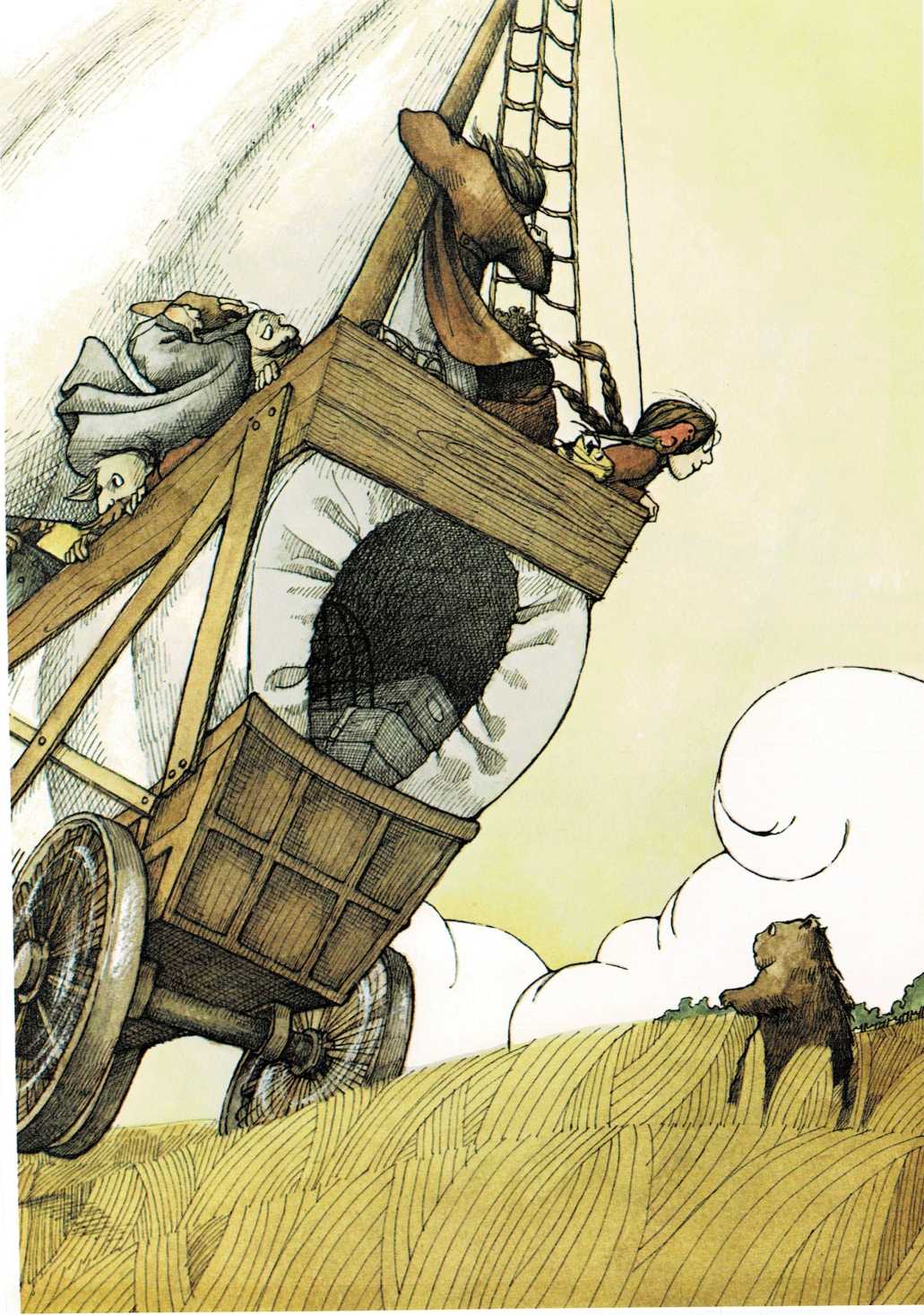
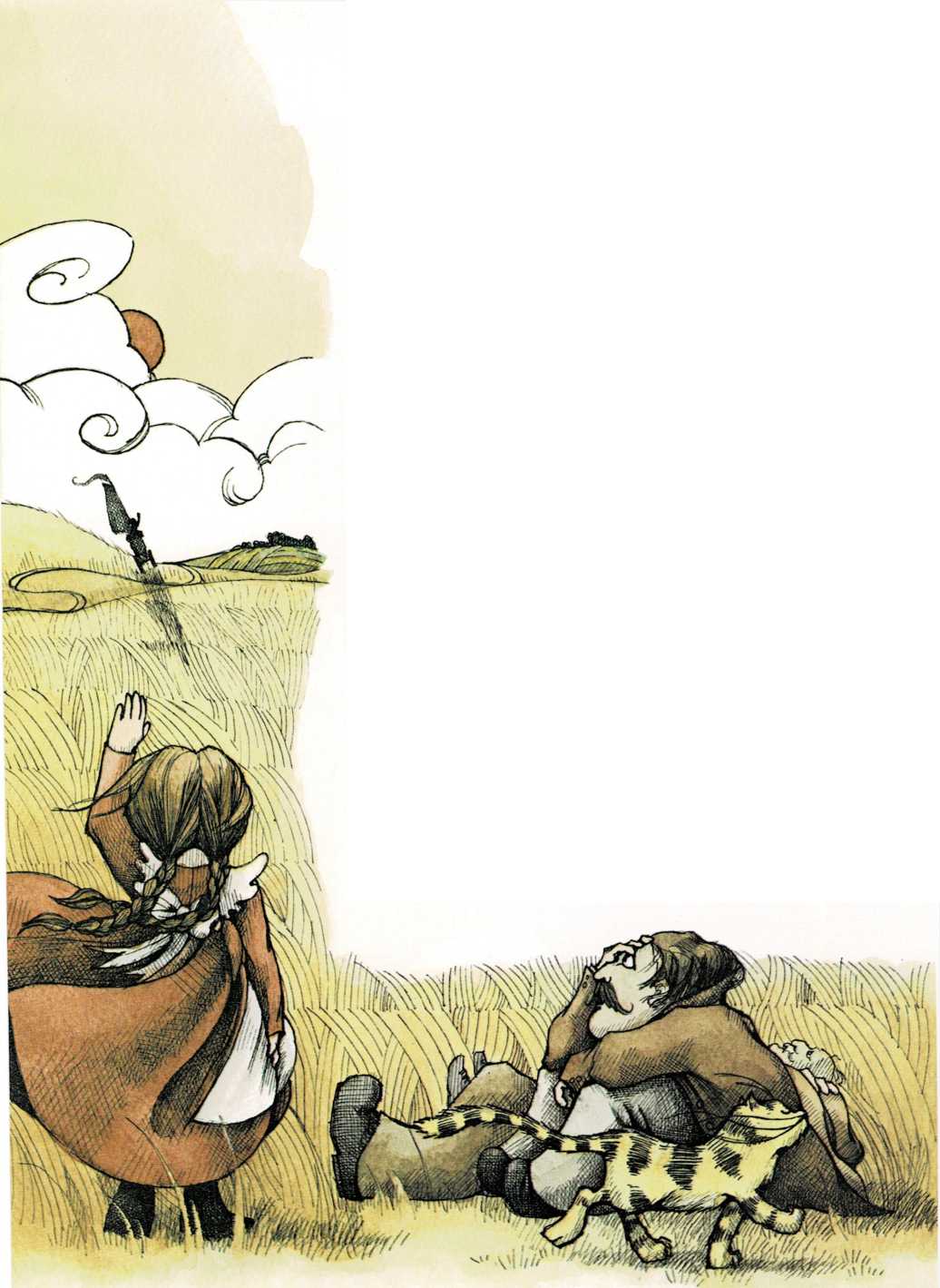
\”Oh-oh,” said Smith. Leaning on the rudder handle, he steered the wagon
out of the direct path of the wind and dropped anchor. \”Lubbers!” he
said in disgust. \”I sure didn’t think you’d get seasick in the middle
of a Kansas prairie!”
One by one, the men climbed shakily down the rope ladder. They lay on
the ground in a row. \”Take yer cussed windwagon away, Smith,” groaned
Mayor Hawkins. \”It’s all you say it is—but we never want to see it
again!”
Smith shook his head, ruefully. He stooped to kiss Charity on the cheek.
\”Goodbye, matey,” he whispered. \”You’re the only able-bodied sailor in
the bunch!”
He waited until she scrambled down the ladder. Then he upped anchor and
turned the wagon so that the wind once again filled the sail. As Charity
watched, the wagon sped swiftly out of sight over the horizon, pushed by
the mighty energy of the wind.

